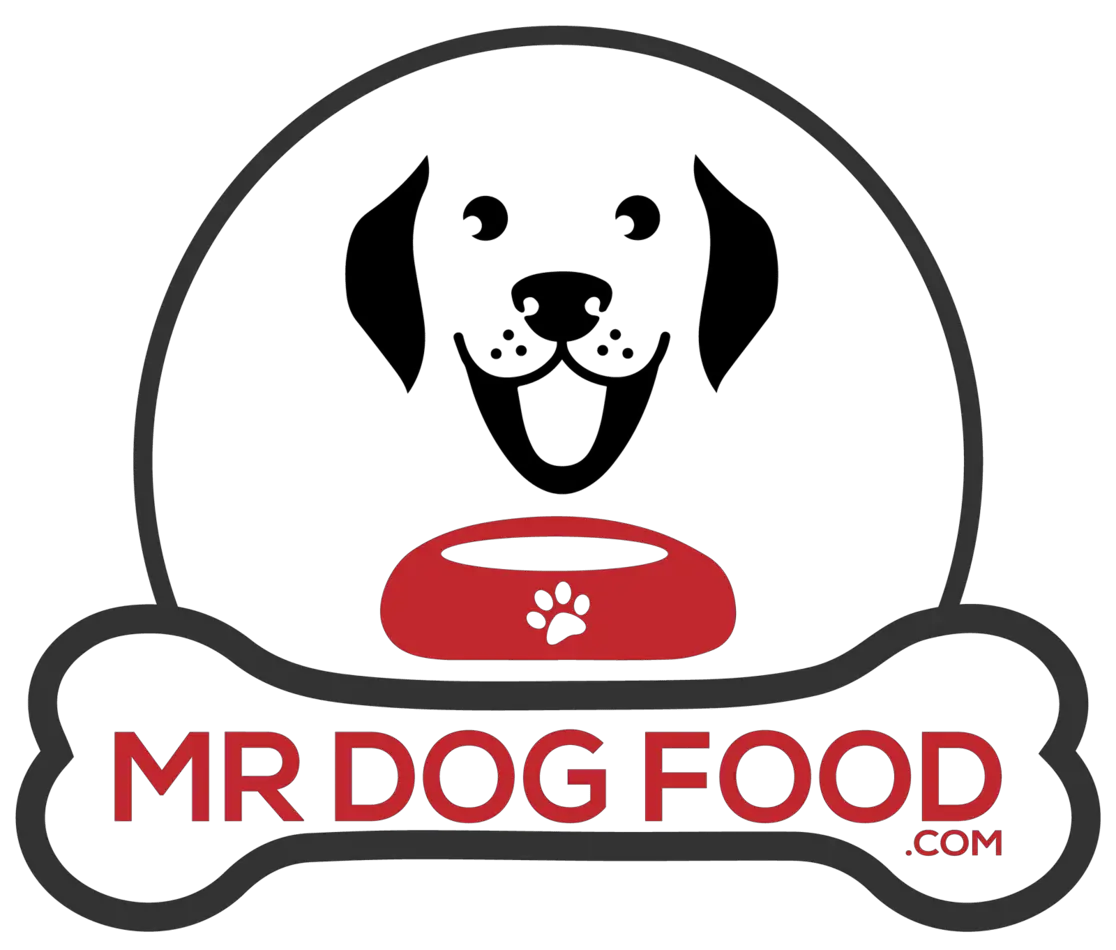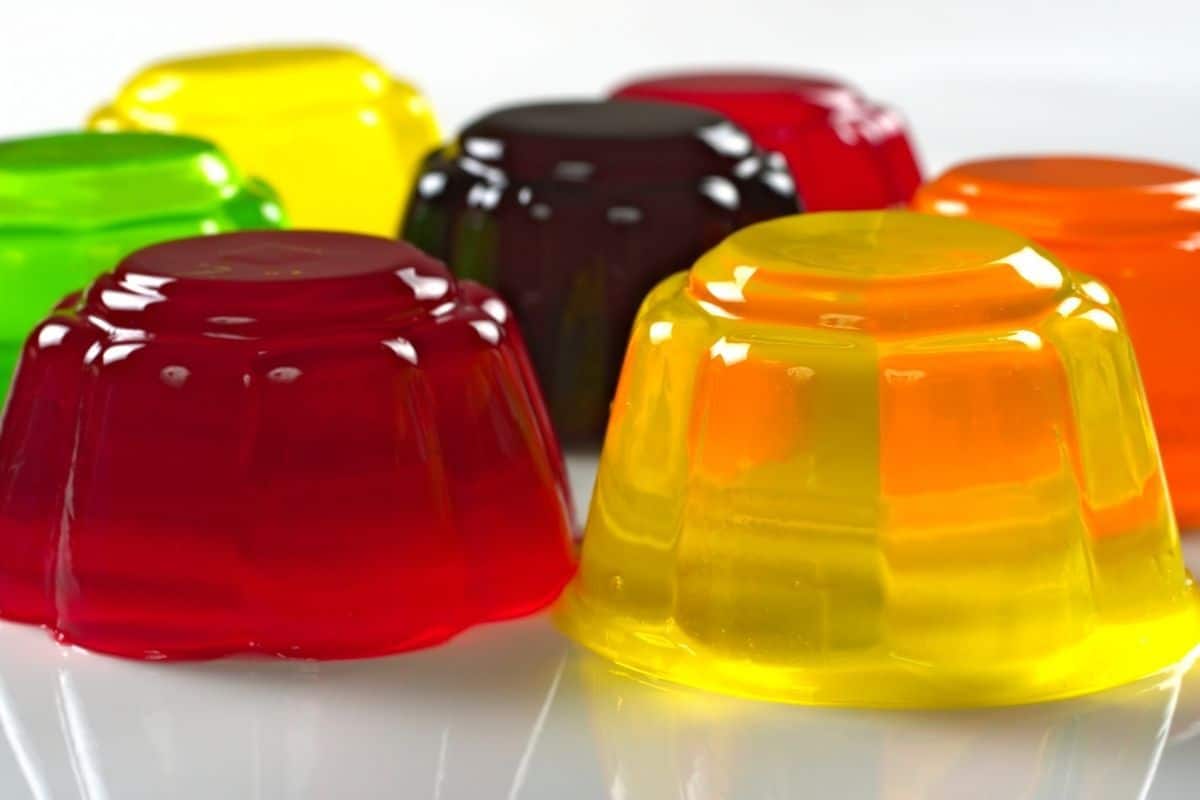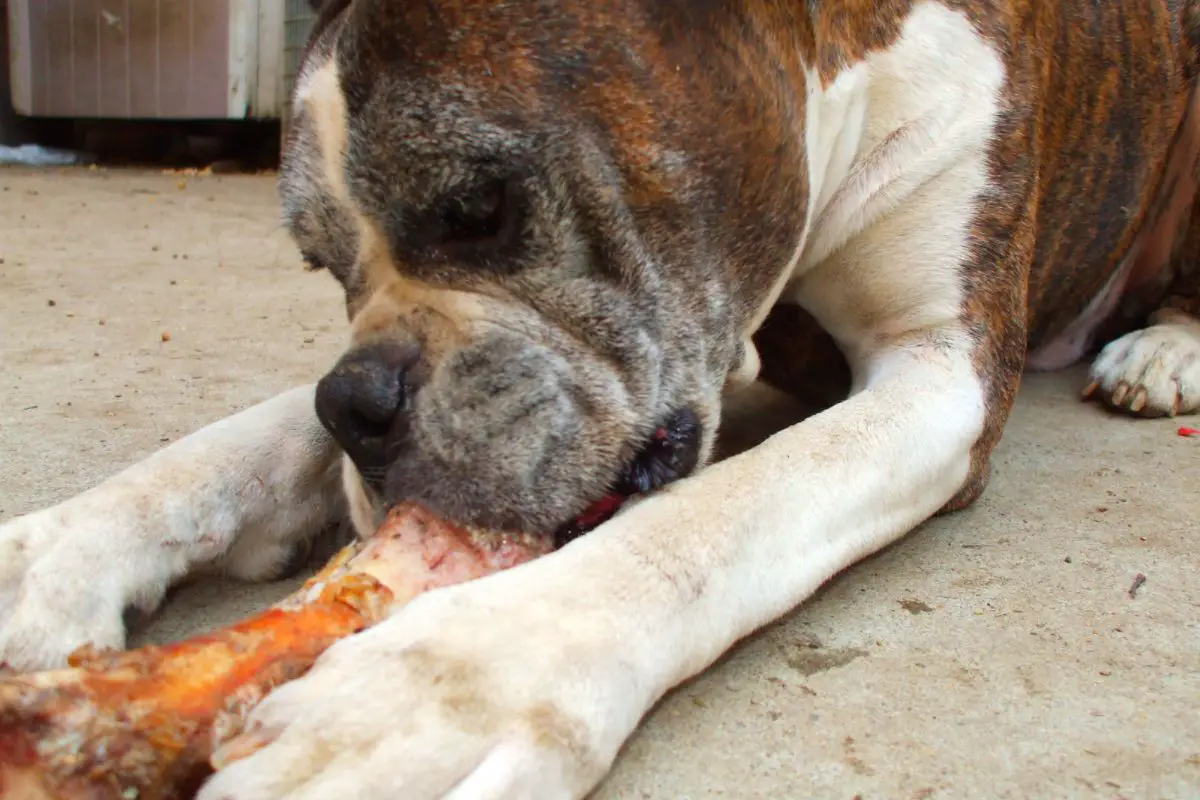This post contains affiliate links.
Nearly everyone likes Jell-O, and everyone who has a dog they love wants to give that dog a treat, something to reward the pup or just make him happy. These two facts should not intersect. Can dogs eat Jell-O?
Dogs should not eat Jell-O. If you discover that your dog has eaten Jell-O without your knowledge, you need to get him to your veterinarian as soon as possible. While gelatin is not harmful to your dog and can be healthy when made correctly, the risk from feeding your dog Jell-O is too high.
Not all Jell-O is dangerous for humans, but no Jell-O is healthy for your dog. It should be avoided, and if gelatine is something you are intent upon feeding your dog, there are other methods available. Below, we’ll look at what’s bad about Jell-O, what’s good about gelatine, and ways to include gelatine in your dog’s diet.
Table of Contents
The Benefits of Gelatin
It should be pointed out here that while “Jell-O” is a brand name, while “jello” is a genericized word that has come to refer to any fruity gelatine snack. For the purposes of this article, “Jell-O” refers to the brand name, but all the information applies to any jello snack.
The stuff that makes Jell-O jiggle and lends its name is gelatin, a protein that our bodies and our dogs’ bodies need. It is made from collagen, a building block in our bodies for bones, ligaments, tendons, skin, and hair.
While collagen appears in many skincare advertisements and products, its benefits go far beyond promising younger-looking skin.
We (people and dogs) produce collagen naturally, but as we age, our bodies begin making less of the stuff than they used to, which is why our skin begins to wrinkle and, more pragmatically, why our joints stiffen and begin to hurt.
The same goes for dogs, so we want to be sure to get them all the nutrients they need, including collagen.
When they were wild animals, and more like wolves, dogs got gelatine with almost every meal. They ate whatever they’d killed, including the bones, which provided them with collagen-rich gelatin.
Without the hunt and the subsequent bone-gnawing, dogs need other sources of gelatin to help their collagen level, but a bowl of Jell-O isn’t the place it should come from due to some risks discussed below.
Other sources will not pose serious health risks to your dog.
Gelatin usually comes from boiling the skin and bones of ruminants (cows and horses and the like) and pigs. Another excellent source of gelatin is chicken bones.
In addition to the benefits to joint health, the components found in gelatin can benefit your dog in other ways, like:
- Preventing brain damage
- Preventing seizures
- Aiding in the digestion of carbohydrates
While not every dog is at risk for seizures, as they age, that risk increases in every dog. Also, most pups have some carbs in their diets, and their systems will accept any help they can get when it comes to digesting those carbs.
The Dangers of Jell-O
Now that you know your dog needs gelatin, you may very well think, “Hey, I’ve got a box of Jell-O in the pantry,” but it should stay there.
While every cube of Jell-O your dog encounters won’t kill him, some kinds are more dangerous than others, which we’ll address in a moment. But even the non-dangerous Jell-O isn’t good for your pooch.
Sugared Jell-O
Jell-O contains gelatin, already established as something good for dogs. But it also includes lots of sugar, which isn’t good for anybody.
Too much sugar can cause dental problems for your dog, which can put him at a severe disadvantage since dogs use their mouths to explore things, eat, and defend themselves. With rotted teeth, dogs are poorly equipped for the world in which they live.
Beyond tooth decay and related issues, sugar can lead to obesity in your dog, and study after study, like this one from Harvard, indicates that sugar intake and heart disease (among other issues) share a direct link.
Sugar-Free Jell-O
Many Jell-O varieties contain artificial sweeteners, which are the problem with sugar-free products of any kind when it comes to your dog ingesting them. A look at nearly any nutritional label on a box of Jell-O reveals that it contains artificial sweeteners, especially sugar-free flavors.
Jell-O containing xylitol can be extremely dangerous to your dog, and since the labels just say “artificial sweeteners,” you won’t know for sure if xylitol is among them. If it is, you’ve got problems.
Artificial sweeteners of any type are problematic for humans, as well as dogs, so you’ll want to avoid these for yourself as well.
The Upsides of Xylitol
Xylitol and Stevia emerged as natural “artificial” sweeteners in the latter half of the twentieth century, but Stevia quickly went away in the early 1990s when studies suggested it had carcinogenic properties.
Subsequent studies have refuted that claim.
With Stevia sidelined, Xylitol emerged as the artificial sweetener of choice. With fewer calories than sugar, it has been shown not to increase blood sugar levels. A 2020 study at Paris’ Académie Internationale de Médecine Dentaire Intégrative showed that xylitol provided oral hygiene benefits by killing mouth bacteria and fighting tooth decay by helping to rebuild enamel.
It is found in many sugar-free products and is beginning to appear more and more often in oral hygiene products.
Downsides for Your Dog
Dogs do not process xylitol the way we do, which means that xylitol does different things to their bodies than ours. When it interacts with the canine system, it can drive your dog’s blood sugar levels very low– low enough to kill him– in literally minutes.
If the low blood sugar doesn’t kill the animal, the possible liver failure that follows probably will. While you may not be able to look at your dog and tell that he has low blood sugar or that his liver isn’t working right, you can be on the lookout for these symptoms of xylitol poisoning:
- Vomiting
- Sluggishness
- Weakness
- Loss of coordination (general clumsiness)
- Seizures
More than one of these symptoms occurring in your dog is cause for a visit to the vet. The appearance of even one of them, if you know your dog has just eaten Jell-O, should have you already on the way to the vet.
To be clear: do not feed your dog Jell-O. At best, it is not good for him. At worst, it contains xylitol and ends up killing him.
Feeding Your Dog Gelatin
You can’t feed him Jell-O, but he needs gelatin, so what do you do? You have several options, with the simplest option is buying gelatin supplements that are available in several forms.
There are powdered supplements that get sprinkled onto your dog’s food– wet or dry food works– and stirred in, like Collagen for Dogs from Totally Wags, and found on Amazon.com.
If you want to give your dog in treat form, look for a product like The Missing Link’s Collagen Care Soft Chew Treats (found on Amazon.com).
Or you might go for a pill, such as the Nordic Naturals Omega 3 Dog Formula, found on Amazon, as well.
If you go this route, be sure and also pick up something like Greenies’ Pill Pockets— peanut-butter flavored godsends that trick your dog into actually taking his medicine.
All these linked products are available through Amazon.
Making Your Own
Maybe you’re a DIYer, maybe you like to cook, or maybe you want to be sure you know what your dog is eating.
You might, then, want to make your own gelatin for your pup. You’ll know it’s xylitol-free, for one thing, and for another, it isn’t any more complicated than making Jell-O out of the packet.
- Combine one cup of bone broth per tablespoon of gelatine powder in a saucepan.
- Stir to dissolve the gelatine powder.
- Simmer over medium-low heat for 10 minutes.
- Take off heat and let it sit for a minute or so.
- Pour into a glass bowl, individual serving vessels, or ice cube trays.
- Refrigerate at least four hours before serving.
This recipe yields a gelatine treat for your dog that’s sugar- and xylitol-free, it tastes like meat instead of sugary fruit (the bone broth listed above is chicken bone broth, but beef is also available), and it’s easy to make.
Your dog already loves you, but he’ll be that much happier with this treat in his life, not to mention healthier.
Conclusion
Gelatine is an essential part of your dog’s healthy diet, but the delivery method you choose is critical. Jell-O is not a safe way to feed your dog gelatine and should not ever be part of his diet. Not all Jell-O poses the same risks, but no Jell-O is suitable for your dog.
Consumption of Jell-O by your dog can lead to:
- Dental issues
- Seizures
- Liver failure
- Dangerously low blood sugar levels
- Sluggishness
- Death
Safer ways for your dog to consume gelatine include gelatine supplements or brewing your own batch of homemade, sugar-free, xylitol-free gelatine treats.
Related Articles
- Can Dogs Eat Lemongrass? Let’s Find Out!
- Can Dogs Eat Mayo? (We Find Out)
- Can Dogs Eat Raspberries? Let’s Find Out!
- Can Dogs Eat Frozen Yogurt? Read This First!
- Can Dogs Eat Ginger Snaps: Yay or Nay?
Sources
- Ace Fitness: Is Stevia Safe? The Truth About Stevia Being a Healthy Alternative
- Canine Muscleworks: Gelatine: The superfood for bone, joint, skin and hair health
- Cedars-Sinai: Collagen for Your Skin: Healthy or Hype?
- Doggie Designer: Can Dogs Eat Jello? Is Jello Safe for Dogs?
- DogHint.com: Can Dogs Eat Jell-O? (+ Gelatin Dog Treat Recipe Included)
- Food and Drug Administration: Paws Off Xylitol; It’s Dangerous for Dogs
- Harvard University: Heart Health Eating too much added sugar increases the risk of dying from heart disease
- Modern Dog Magazine: DIY Eat – Gelatin Treats for Dogs
- National Library of Medicine: Health benefits of xylitol
- RxList.com: Xylitol: Health Benefits, Uses, Side Effects, Dosage & Interactions
- SFGate: Sweet but Deadly / It’s safe for people, but this increasingly common sweetener can kill your dog
- Stop That Dog: So, Can Dogs Eat Jello?
- The Canine Chef Cookbook: GelatinTop Dog Tips: Can Dogs Have Jello? Here Are the Benefits and Side Effects
- Wag Walking: Can Dogs Have Gelatinous Food?
- WebMD: Vitamin monograph XYLITOL: Overview, Uses, Side Effects, Precautions, Interactions, Dosing, and Reviews
Mrdogfood.com is a participant in the Amazon Services LLC Associates Program, an affiliate advertising program designed to provide a means for sites to earn advertising fees by advertising and linking to Amazon.com. We also participate in other affiliate programs which compensate us for referring traffic.




